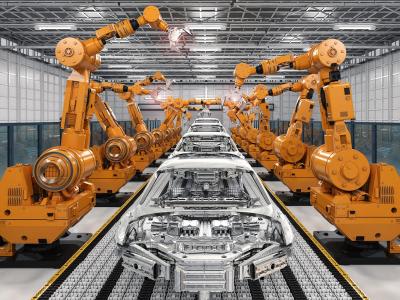Since 1989 countries in Central and Eastern Europe have formed a key center for automotive production in Europe. The region continues to benefit from ongoing, committed investment in new plants. On one side there are strong domestic brands (e.g. Škoda and Dacia now under the control of Volkswagen and Renault respectively), and on the other side—due to foreign direct investment—Mercedes-Benz, Toyota, Volkswagen, MAN, Volvo, General Motors (Opel, Isuzu), Fiat, Kia and Hyundai have opened plants in Poland, Slovakia, the Czech Republic, Hungary and Romania. These investments were planned as a precursor to an influx of original equipment manufacturers.
The countries of the region, despite dozens of years of communism, are at present very important locations for the automotive industry. Poland is the second largest producer of passenger cars, after the Czech Republic, and a powerful player in the production of commercial vehicles.
Automotive industry in Central and Eastern Europe
Czech Republic
Car production represents the most important industrial and export segment in the Czech Republic, having more than a 25% share in total Czech exports. In 2019, 1.4 million cars were produced in the Czech Republic, which makes it a country with one of the highest car production per capita in the world, after Slovakia. There are three main car manufacturers: Škoda Auto (64% share), Hyundai Motor Manufacturing Czech (22% share) and Toyota Peugeot Citroën Automobile (14% share).
While automotive alone represents around 6% of GDP, due to the significant supply-chains linked to the industry, the total share of the automotive for the Czech economy might represents around 9% of GDP. As such, the importance of the segment is one of the highest among countries in the regions, with more than 90% of the produced cars being exported, mainly to Germany. As such, the German scheme scrappage would be an important pro-growth factor for the industry.
Hungary
The Hungarian automobile industry produces about 5% of GDP. It employs 4% of total workers in the country. Most cars and car parts are produced by German companies (VW Group and Daimler), and 90% of the production is exported. While relevance of the local automotive is around 5% GDP, including spill-overs, the automotive industry, might represents around 9% of GDP, though the share in gross value added is lower for the Hungarian automotive industry: it still heavily relies on the import of inputs. As such, it is likely that disruptions on global value chains and a significant fall in demand will hit Hungary at an above average level as the majority of the work done is assembly, without R&D or marketing.
Poland
The Polish economy and its export structure are one of the most diversified among the CEE economies. The reliance on the automotive sector is also one of the lowest in the region. The automotive sector in Poland represents just 2.7% of GDP and slightly above 10% of total industrial production, which is one of the lowest dependencies in the region. Due to its lower importance, there is no debate about the scrappage in Poland.
Companies from related fields (eg, tyre producers) managed to return production at levels similar to those prior to the pandemic. They move to Asian markets, where the demand seems to have rebounded. However, they face substantially lower margins.
Learn more about related services
Automotive industry in Central and Eastern Europe
Romania
Germany is the largest export partner for Romania with a 22.9% share of total exports. Around two-thirds of the total exports are automotive-related. Hence, automotive-related exports to Germany account for about 15% of Romanian exports, representing roughly 10% of Romania’s GDP and employing approximately 90,000 people. Romania belongs also to the mostly exposed countries in terms of GDP share, which is around 10 % and exports of the automotive consists of almost 50%, as in Slovakia.
Russia
The share of Russian automotive to GDP is relatively small, as Russia is not focused on car manufacturing. The share of the automotive industry is 2.1% of GDP (which is significantly smaller than the majority of its CEE counterparts) and form only 0.5% of total exports. This is divided to passenger cars exports (0.3%) on the one hand, and trucks, buses and auto parts (0.2%) on the other hand. Automotive industry employs less than 0.5% of Russia’s labour force.
Slovakia
Slovakia is the country with the highest share of produced car per capita, with 1.1m cars produced last year. There are four main car-makers in Slovakia with a relatively evenly distributed production share among the first three car-makers of around 350,000 cars per year: Volkswagen, KIA, and PSA. The fourth produced is Jaguar Land Rover. The share of automotive in industrial production is the highest in the region, around 13% of GDP, and almost 50% of industrial production. The similarly high share has automotive in Slovakia’s total exports.
Sources:






